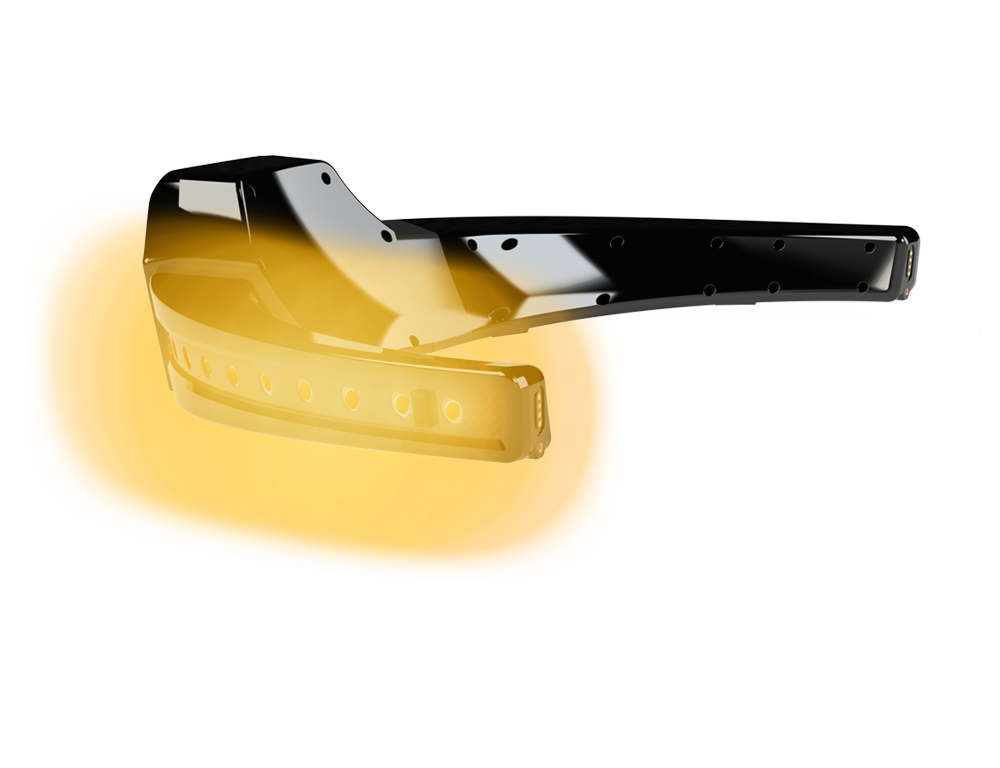Polycarbonate with a
touch of Gold

UNIVERSAL FIT
Designing a product with a universal fit for most motorcycle helmets worldwide is a complex and tedious endeavor that requires balancing engineering precision, ergonomic adaptability, and rigorous testing. Motorcycle helmets vary widely in shape, size, and internal structure—full-face, modular, open-face, and half-helmets each present unique challenges. A product such as a communication device, visor accessory, or mounting system, must accommodate these differences while ensuring comfort, and functionality. Designers begin by studying anthropometric data and helmet standards (e.g., DOT, ECE, Snell) to map out a range of head sizes and shell geometries. This involves 3D scanning and modeling hundreds of helmets to identify common attachment points, curvatures, and tolerances, often relying on CAD software to simulate fit across brands like Shoei, Arai, or Bell.
The process grows more intricate when factoring in adjustability and installation. A universal design might employ flexible mounting mechanisms—think adjustable clamps, modular brackets, or adhesive pads—capable of conforming to diverse helmet contours without compromising structural integrity. Prototyping is exhaustive, with iterative cycles of 3D printing, fit testing, and user feedback to refine the product. Environmental stressors like vibration, wind pressure, and temperature extremes (from scorching summers to freezing winters) must also be simulated to ensure durability, as motorcycles demand resilience beyond typical consumer goods. Regulatory compliance adds another layer; the product can’t interfere with a helmet’s protective capabilities, requiring crash tests and certification checks. This meticulous work can take years, blending art and science to achieve a one-size-fits-most solution.
The material science behind such a product draws on the rich history of rubber, plastics, and polycarbonate, each evolving dramatically since their inception. Rubber’s story begins with natural latex from the rubber tree, used by Mesoamerican cultures for waterproofing and balls as early as 1600 BCE. Charles Goodyear’s 1839 discovery of vulcanization—heating rubber with sulfur to enhance elasticity and strength—revolutionized its industrial use, making it a staple for tires, seals, and gaskets by the late 19th century. Synthetic rubbers, like neoprene (1930s) and silicone (1940s), expanded its versatility, offering heat resistance and flexibility ideal for helmet straps or vibration-damping mounts in modern designs. Today, rubber’s role in products include shock-absorbing pads or weatherproof seals, leveraging its adaptability to varied surfaces.
Plastics and polycarbonate, meanwhile, brought lightweight durability to manufacturing. Plastics emerged with celluloid in the 1860s, but Bakelite (1907)—the first fully synthetic plastic—marked a turning point, enabling mass production of rigid, moldable components. The mid-20th century saw an explosion of thermoplastics like polyethylene and ABS, prized for their strength-to-weight ratios and ease of injection molding. Polycarbonate, introduced by Bayer and General Electric in the 1950s, redefined high-impact applications with its transparency and toughness—up to 250 times stronger than glass—making it a go-to for helmet visors and protective casings. In the BikeLink product line, custom ABS mixtures form a sturdy chassis, while polycarbonate house critical components, with additional formulations for UV stabilizers (to withstand prolonged outdoor exposure), oil and gas resistant (not to smudge or melt when touched by certain oils and gas), and over all weather resistant for those unexpected torrential down pours and extreme dusty environments. Making a BikeLink product is no easy task. Add all of this, plus the fact the product is exposed to high-speed, makes every BikeLink component exist in a moving sand-blaster. So even the finish of a BikeLink Helmet Unit has to withstand dirt, dust, debris, heat, cold, humidity, and water at highway speeds.

